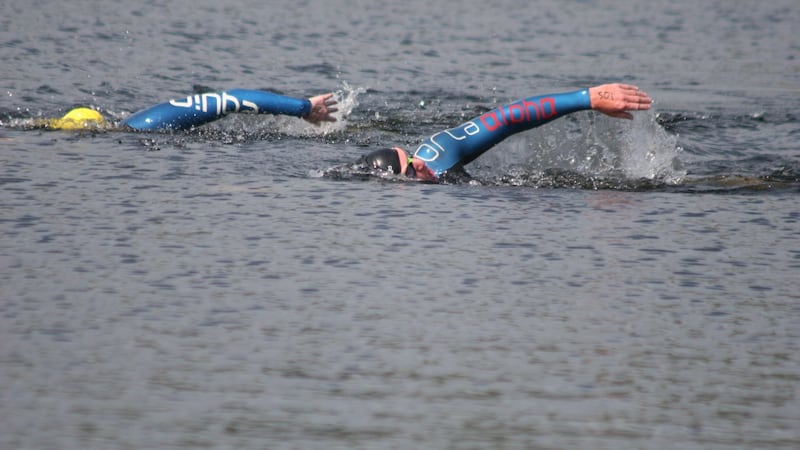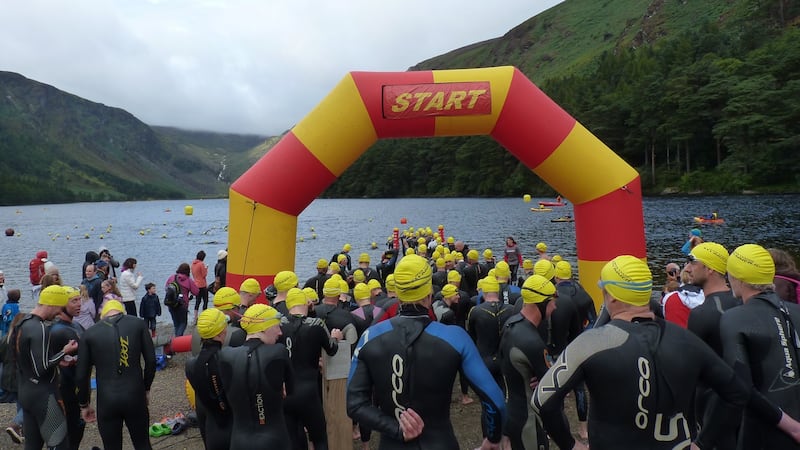Despite thousands of kilometres of eye-catching coastline lapping this hydrophilic island, and a fathomless network of picturesque rivers and lakes, open water swimming is still deemed by some to be the first and final bastion of the unhinged.
And that is often from fellow fitness-heads: those who think little of running marathon lengths, say, of a morning, or an all-day cyclosportive every second summer weekend. But an invigorating 30- or 40-minute swim in open water to complement your fitness regime from May to September? Forget it.
"It can still be the domain of crazy people who get into cold water," laughs Peter Conway, a Swim Ireland director and coach at Aer Lingus Masters Swimming club. "And I'd like to think that they'd always be there. The Liffey Swim has its centenary year next year, which gives you an idea as to how long open water swimming has been formally in existence in Ireland."
If you’re tired of the thousands of autopilot pool lengths you’ve covered over the last decade – up and down on your lonesome, like some demented, incarcerated polar bear – but don’t know how best to transition to open water swimming this summer, Conway stresses the safety first route: first head down to your local Masters swimming club (ie adult swimming groups meeting in swimming pools across the country) and take it one stroke at a time.
Pool of experience
“Have a swim there with the club and establish what your competencies are, and the areas that you might want to develop before heading for the open ocean. Within Masters clubs there will generally be a pool of experience – no pun intended. There will be people there who have partaken of open water swimming for a number of years, and will help steer you.”
Where there may not be such pools or clubs within reasonable reach, then ask around, or Google search local groups who are swimming in open water in the summer. But never, ever swim alone outside a pool.
“I would always suggest you swim in a group, and with people who have that open water experience,” says Conway, who has been competing in open water events since the mid-1970s. During that time he has seen a huge surge of interest in the sport, especially in the last decade.
“I see it a lot with Leinster Open Sea, who I swim a lot with. They operate sea swims and races along the east coast, from Fingal down to Wexford, with the guts of 40 races between May and September. I can remember when you might have had 50 swimmers per race. Now you might have anything up to 200 or 300.”
‘Aesthetic locations’
"The open water swimming industry has grown massively in recent years," says Wayne Timmons, co-founder of Open Water Swimmer. "A lot of that has been on the back of wetsuit development, and the growth of the triathlon industry. Because we live in Ireland, people prefer wetsuits.
“We set up the business seven years ago with an eye to hosting open water events in very aesthetic locations, but also structuring it so that it is available to people of all abilities by offering a number of distances. As the weather in Ireland can be pretty poor, we currently run all our events in lakes, which has paid off: we haven’t had to cancel an event yet.”
This year Open Water Swimmer will manage three events: Lough Key (June 16th), Hodson Bay in Lough Ree (July 21st) and Glendalough (September 8th-9th). These events can range from 750m up to 3.9km, can cost between €25-€40 each, and attract several hundred participants.

A keen open water swimmer himself, Timmons stresses that while the sport can offer an excellent way to support training for triathlons, its growth is also attributed to how swimming is non-impact and doesn’t hurt your body.
“But the difference between pool and open water swimming is large, because open water is not just colder, but more dramatic, or even scarier for some. Your basic swim fitness will come from the pool, but you need to get out in open water well in advance of an open water event.
“That way you can get used to things like getting slapped in the face by a wave as you try to take a breath of air, or the taste of seawater, for example. It’s a tough transition, yes, but it’s very doable, and you will find that those swimmers who do transition to open water never go back.”
Innate buoyancy
A wetsuit is greatly advised, Timmons says, not just for the cold but also for its innate buoyancy. Unless planning on beating any national records sometime soon, you can pick up a perfectly adequate one in the €100-€150 range from a triathlon shop. But rather than the online route, visit the store and try it on, as the fit needs to be perfect. Goggles are essential, and while the pool variety will suffice there are specially designed open water goggles for less than €15. Otherwise earplugs are very advisable (less than €5), as is a swimming cap for heat insulation.
The holder of several national medals for surf lifesaving, Timmons naturally describes safety as being “king” in the sport. This is why he says that for every 12 swimmers in the open water during their events, they will have at least one person in a kayak or boat to assist.
“We place all of them evenly around the lake so you’re never more than 50m from a kayak at most. Kayaks can slip in and out easily between packs of large swimmers without any issue, so if someone gets spooked or cramped or too cold, and they want out, we just take them straight out of the water and onto the shore within a minute.
“As qualified lifeguards we are watching for all the signs. But sometimes swimmers might want to just hold onto a kayak to take a break, before moving on again. In the serious open water races elsewhere you’d be disqualified for doing that, but not with us.”
Sensible and realistic
Leinster Open Sea works with swimming clubs to establish a summer season of open sea races along the Dublin and Leinster coast. For those looking to transition from a solo, once-a-week in the pool number to open water swimming this summer, it's a big jump, but doable if you're sensible and realistic.

To be clear, these are open water races, rather than “events,” nearly every Saturday and Sunday during the summer. Where possible they let swimmers complete the course (most of which are 1.5-1.6km) in their own time, but if a slow swimmer is delaying the start of the next race they have to enforce a cut-off time.
The good news for the entry-level open swimmer is that all swimmers are issued with a handicap start time before each race; slower swimmers start first, followed by faster swimmers, in some cases as much as 15 minutes later.
The bad news for those simply looking to transition to open water for the first time is that you must be a registered member of a Swim Ireland swimming club, you need a registration number and cannot wear a wetsuit in any of the races (unless on medical grounds). A registration number with Swim Ireland costs €39, annual club membership fees can be €40-€60 for adults, with entry fees to most races currently at €10. But at least you don't have to fork out on a wetsuit.
According to its website, “swimmers should be comfortable to be immersed in the sea for at least half an hour. As a guideline swimmers should be aiming to complete 64 lengths of a 25m pool in under 50 minutes before they take on the challenge of a one-mile sea race. Please be safe: always swim with a group and stay near the shoreline. Your first open sea race should not be the first time you swim in the sea.”















